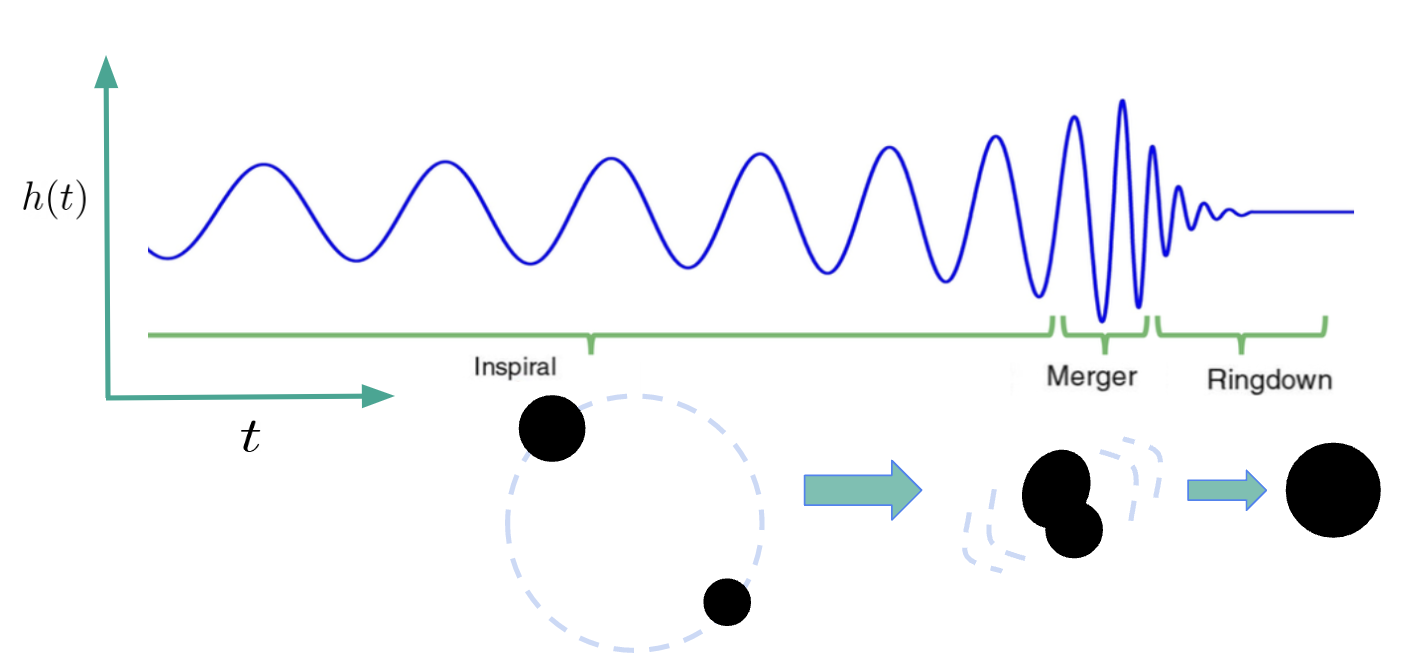Theoretical astrophysics includes the use of mathematical and computational models created based on physics to describe astronomical systems.
Where observation provides real data about how objects in space behave, theory connects that data together into a full understanding and allows scientists to make predictions about phenomena that haven’t yet been observed. These models are often then later applied to observational data.
In this section of the workshop, our program is designed to provide you with a clear and concise introduction to general relativity, binary black hole mergers, and the intriguing domain of gravitational waves. Then, using Python, you will have the opportunity to dissect gravitational wave signals and perform a practical exploration to grasp the essential relationship between distance, total mass, and signal characteristics.
This section culminates in fitting a theoretical signal model to a real data set from the very first detected binary black hole merger event (GW150914). Here you will bridge theory and application, akin to the practices of astrophysical theorists who frequently delve into this kind of captivating work.
